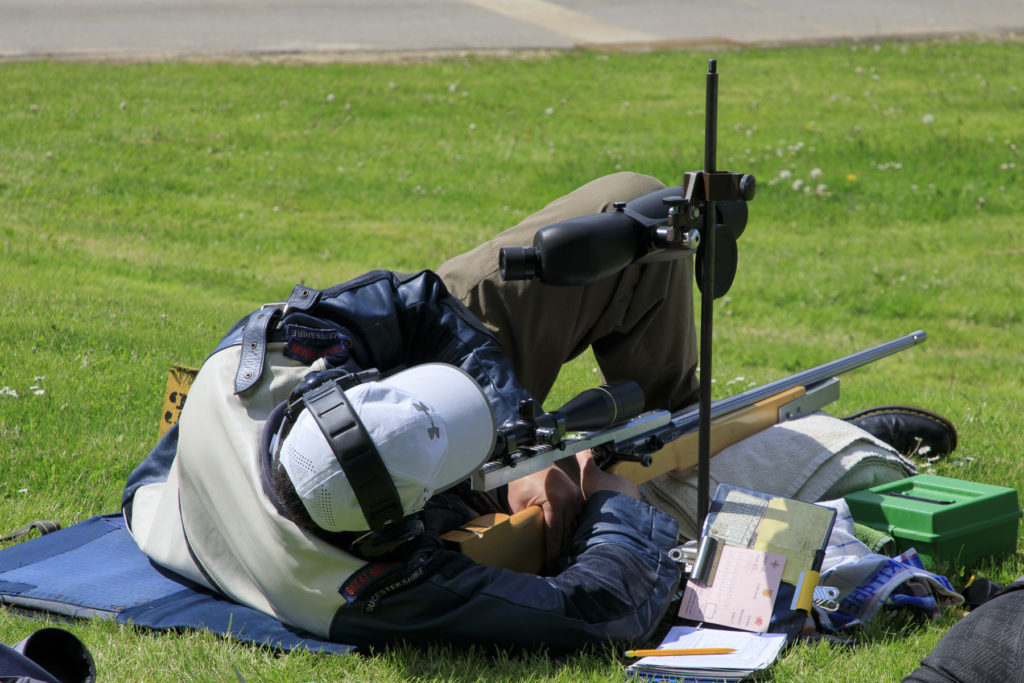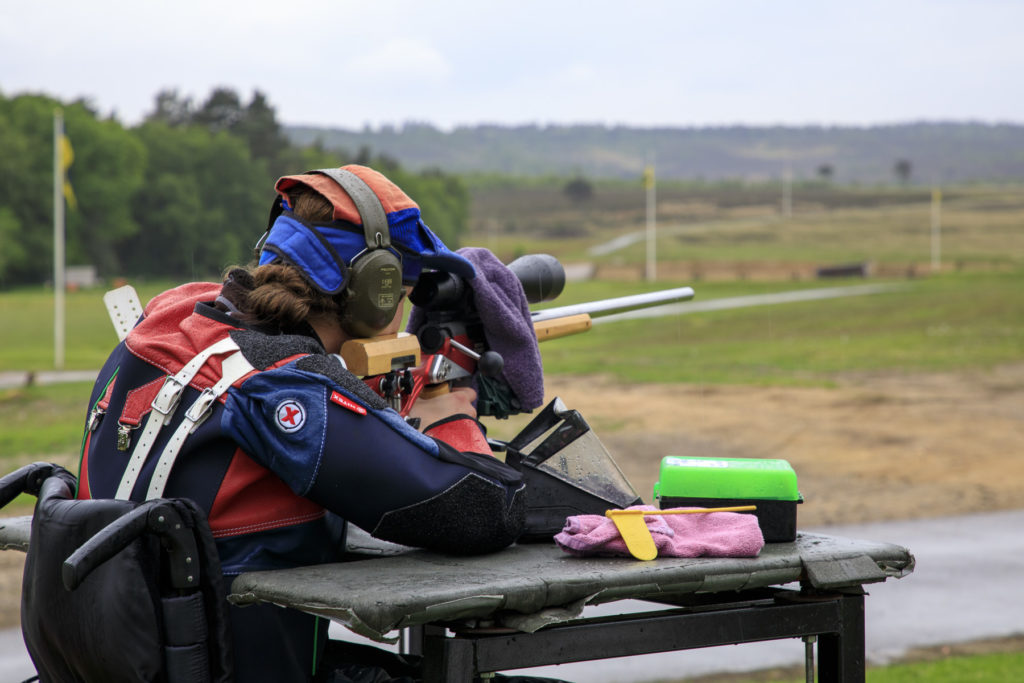The ethos of experimentation within Match Rifle has not been limited to just the technology of the rifle but also to the technique of the shooter. Therefore, a wider range of shooting positions and equipment is also allowed in Match Rifle compared to other shooting disciplines. The rules of Match Rifle state that the rifle must be fully supported by the shooter (i.e. it can not touch the ground). Although a rest can be used in Match Rifle, this is not allowed to contact the rifle but only the hand or forearm of the shooter. This flexibility has given rise to different shooting positions.
Supine Position (a.k.a. Back Gunning)

The supine position originally found popularity in the late 1800s although its exact origins are debatable. There are some who suggest that it originated from stalking and sniping where attempting to shoot downhill. In this scenario the prone position can be uncomfortable and unbalance. Lying supine with your feet down the hill and towards the target is the more natural position to adopt.
Regardless of how the supine position was invented, it has one obvious advantage over the prone position. In backgunning, the two points of contact between the firer and the rifle are further apart. The butt of the rifle is placed in the shoulder and the front of the rifle is supported by the knee. This increase in distance results in a more stable position and it probably part of the reason that the position was originally adopted into Match Rifle.
At the time the sights used were either iron sights or Galilean sights which are similar in nature except the Galilean sights have a mild optical magnification. As well as the position being more stable, the accuracy of the sights is increased by extending the distance between the front and rear sight. The supine position allows the rear sight to be placed on the heel of the butt of the rifle.
It was not until improvements in telescopic sights, which are allowed in Match Rifle, that the prone position once again became the most popular position in the 1980s. Today almost all shooters use a telescopic sight with the traditional iron or Galilean sights now a rarity on the range.
With the advantages stated of the back position, you might well ask why everyone doesn’t shoot in the supine position. One disadvantage of the supine position is that the left knee obscures a large portion of the range. In an individual shoot in changeable conditions, this makes it harder to react to last minute wind changes. However, the greatest reason why the prone position is more popular is likely due to the transfer of shooters from another discipline, either Target Rifle or smallbore, where they have become accustomed to the prone position.
Prone Position (a.k.a. Front Gunning)

The prone position is more prevalent shooting position in Match Rifle today and is perhaps the position more commonly thought of with target rifle shooting. The position is similar to the prone position used in other target rifle disciplines but with a few differences. However there is nothing to stop a Target Rifle shooter from attaching a scope to their rifle and shooting Match Rifle without any other changes to their position.
The prone position in Match Rifle however can take advantage of a rest to support the hand holding the rifle. The rifle may not, however, be directly supported by a rest or bipod nor may the rifle come in contact with the ground. Most Match Rifle shooters, although certainly not all, dispense with the sling and use a rest to support and stabilise their position. The variations in shooting positions throughout the field of Match Rifle is just another avenue for experimentation and interest in Match Rifle, with no clear shooting position being dominant.
Table Shooting (a.k.a. Sitting Position)

For those not able to shoot in either the front or back position, there exists the opportunity to shoot Match Rifle seated at a table. The position is similar in nature to the prone position with a rest supporting the hand, except that this rest is placed on a table. Although the number of shooters who adopt this position is very small, it allows them to either start or continue shooting when they would not have otherwise been able to.
